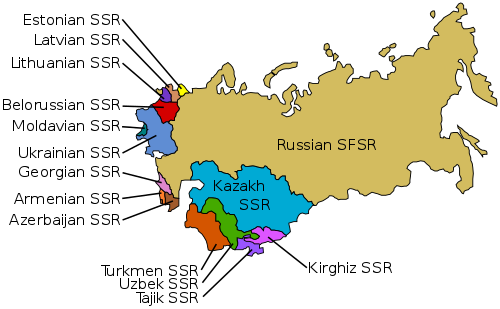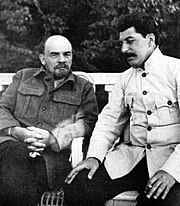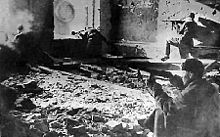User:Σ/Testing facility/Think
| This is a Wikipedia user page. This is not an encyclopedia article or the talk page for an encyclopedia article. If you find this page on any site other than Wikipedia, you are viewing a mirror site. Be aware that the page may be outdated and that the user in whose space this page is located may have no personal affiliation with any site other than Wikipedia. The original page is located at https://en.wikipedia.org/wiki/User:%CE%A3/Testing_facility/Think. |
Union of Soviet Socialist Republics Other names Союз Советских Социалистических Республик Soyuz Sovietskikh Sotsialisticheskikh Respublik | |||||||||||||||||||||||||||||||||||||||||||
|---|---|---|---|---|---|---|---|---|---|---|---|---|---|---|---|---|---|---|---|---|---|---|---|---|---|---|---|---|---|---|---|---|---|---|---|---|---|---|---|---|---|---|---|
| 1922–1991 | |||||||||||||||||||||||||||||||||||||||||||
| Motto: Пролетарии всех стран, соединяйтесь! ( single-party communist state | |||||||||||||||||||||||||||||||||||||||||||
| Leader | |||||||||||||||||||||||||||||||||||||||||||
• 1922–1924 (first) | Vladimir Lenin | ||||||||||||||||||||||||||||||||||||||||||
• 1985–1991 (last) | Mikhail Gorbachev | ||||||||||||||||||||||||||||||||||||||||||
| Legislature | Congress of Soviets and Central Executive Committee (1922-1937) Supreme Soviet (1937-1989; 1991) Congress of People's Deputies and Supreme Soviet (1989-1991) | ||||||||||||||||||||||||||||||||||||||||||
| History | |||||||||||||||||||||||||||||||||||||||||||
• Established | 30 December 1922 | ||||||||||||||||||||||||||||||||||||||||||
• Disestablished | 26 December 1991 | ||||||||||||||||||||||||||||||||||||||||||
| Area | |||||||||||||||||||||||||||||||||||||||||||
| 1991 | 22,402,200 km2 (8,649,500 sq mi) | ||||||||||||||||||||||||||||||||||||||||||
| Population | |||||||||||||||||||||||||||||||||||||||||||
• 1991 | 293,047,571 | ||||||||||||||||||||||||||||||||||||||||||
| Currency | Calling code 7 | | |||||||||||||||||||||||||||||||||||||||||
| Internet TLD | .su2 | ||||||||||||||||||||||||||||||||||||||||||
| |||||||||||||||||||||||||||||||||||||||||||
1On 21 December 1991, eleven of the former socialist republics declared in Georgia – attending as an observer) that with the formation of the Commonwealth of Independent States the Union of Soviet Socialist Republics ceases to exist.2Assigned on 19 September 1990, existing onwards. Russia views the Estonian, Latvian, and Lithuanian SSRs as legal constituent republics of the USSR and predecessors of the modern Baltic states. The Government of the United States and a number of other countries did not recognize the annexation of Estonia, Latvia, and Lithuania to the USSR as a legal inclusion. | |||||||||||||||||||||||||||||||||||||||||||
| Politics of the Soviet Union |
|---|
 |
|
|
The Soviet Union (Russian: Советский Союз, tr. Sovietsky Soyuz), officially the Union of Soviet Socialist Republics (USSR or U.S.S.R.; Russian: Сою́з Сове́тских Социалисти́ческих Респу́блик, tr. Soyuz Sovietskikh Sotsialisticheskikh Respublik IPA: [sɐˈjus sɐˈvʲetskʲɪx sətsɨəlʲɪˈstʲitɕɪskʲɪx rʲɪsˈpublʲɪk] ⓘ, abbreviated СССР, SSSR), was the first constitutionally socialist nation that existed in Eurasia between 1922 and 1991.
Geography
Political divisions
Constitutionally, the Soviet Union was a union of
On 16 November 1988, the Supreme Soviet of the

History
The last Russian
The Soviet Union was officially established in December 1922 with the union of the
Fall of the Russian Empire
After losing the Crimean War, Russian Tsar Alexander II reorganised the nation to that comparable to Western nations, although it remained backward compared to Europe's social, political, and economic progress and the majority of the Russian population were still little more than serfs. Many revolutionary groups formed in the 1870s, including the Russian Social Democratic Labour Party (which later became the Communist Party of the Soviet Union) and a terrorist group known as The Peoples Will (Narodnaya Volya[6][page needed][7]), which successfully assassinated Alexander II. His successor, Alexander III, reaffirmed the Tsarist autocracy as an assurance of security and stability. That also prevailed under his successor, Nicholas II, who rose to power in 1894.
Due to the lack of industrial progress in the Industrial Revolution, concern rose in the government. The Finance Minister, Sergei Witte, accelerated the construction of the Trans-Siberian Railway, which had reached the Russian Far East in 1903. In 1904, Japan declared war on the Russian Empire, causing civil unrest. Many peasants rebelled and workers went on strike.
The next year, which ended with the Russian Empire's defeat, caused more civil unrest. In January 1905, a group of workers peacefully marched to present demands before the Tsar, whose guards slaughtered the workers. This event, known as
In response to the chaos, Nicholas II established a parliamentary representative body, the State Duma. In spite of this move, the Tsar resisted attempts to make the transition from absolute monarchy to constitutional monarchy, dissolving the first three Duma sessions in 1906, 1907, and 1912.
World War I
The Russian Empire entered
In April 1915, the German Army began its offensive against the Russian defence at
In October 1916, 250,000 workers revolted in Petrograd. Although the weapons supply improved,[10] 2,000,000 soldiers surrendered, and 1,500,000 deserted due to the low morale.
The casualties sustained by the Russian Empire during their offense against the Germans was relatively high, between 1914 and 1917 Russia sustained the heaviest casualties of any side in the war with nearly 10 dead or wounded.[11] For every 1000 men, the Russian Army lost 85, whereas the British Army lost 6 for every 1000 men.[8]
February and October Revolutions
In early 1917, workers at
Taking the advice of his generals, Nicholas II abdicated the throne on 15 March 1917, ending the
The Provisional Government wanted to continue the war. It launched the
Lenin, after debating with leading Bolsheviks who favoured prolonging the war in hopes of precipitating class warfare in Germany, persuaded the All-Russian Central Executive Committee that peace must be made at any cost.[16] On 3 March 1918, the All-Russian Central Executive Committee capitulated to the Central Powers' terms and signed Treaty of Brest-Litovsk.[17] Russia lost Poland, the Baltic lands, Finland, and Ukraine to German control and gave up a portion of the Caucasus region to Turkey.[16] With the new border dangerously close to Petrograd, the government was soon transferred to Moscow.[16]
Interwar years
In late 1917, Lenin established the Council of People's Commissars and the Cheka; the former was a governing body, and the latter was the state's security apparatus.[18] With Leon Trotsky's assistance, Lenin also created the Red Army, which helped strengthen the recovering country.[19] The next year, in January 1918, Lenin also decreed compulsory labour service, and created the infamous Gulag labour camps.[20]
In the same year, the
.The banks were nationalised and the economy was placed under the command of an economic council in preparation for a
In March 1921, the Tenth Congress replaced

In May 1922, Lenin had a stroke, leaving him unable to speak for weeks. In December 1922 and March 1923, he suffered two more strokes, and later died in January 1924. His body was embalmed and moved to

World War II

The third Five-Year Plan, ratified in March 1939, was meant to further development of the Soviet Union's economy and industry.
Cold War
The Soviet Union emerged from World War II as a world Superpower.
Khrushchev and Brezhnev eras
On 6 March, 1953, Stalin's death was announced, and a committee of top leaders governed in a
On 14 March, Malenkov resigned from the secretariat of the Central Committee.
Reforms and dissolution
Nuclear power issues.
Foreign relations and military
The Soviet Union, as a superpower, exercised global economic political and military influence. From 1946, a year after the found of the United Nations (UN), until 1991, it was one of the five permanent members of the UN Security Council; however, because the Ukrainian SSR and Belorussian SSR were admitted as full members into the UN, the country was represented by thee seats in the UN. The Soviet Union maintained diplomatic relationships with most of the countries in the world,[citation needed] particularly those of the Eastern Bloc and other communist countries.
The Soviet Union's military was handled by the
Government and politics
Economy
The Soviet Union's economy was based on
Income and human development
Science and technology
Must remember about the
Transportation
Energy
Health
Crime and law enforcement
Demographics
Language
Education
Religion
Ethnic groups
Culture
Literature, philosophy, and the arts
Sports
See also
References
![]() This article incorporates text from this source, which is in the public domain. Thomas Skallerup. Soviet Union: A Country Study. Federal Research Division.
This article incorporates text from this source, which is in the public domain. Thomas Skallerup. Soviet Union: A Country Study. Federal Research Division.
- ^ Adams 2005, p. 21
- ^ Feldbrugge 1993, p. 94
- ^ Walker 2003, p. 63
- ^ Von Laue, Von Laue & Harbaugh 1996, p. 242
- ^ Hughes & Sasse 2002, p. 63, 146.
- ^ Alexander II: The Last Great Tsar By Edvard Radzinsky
- ^ Yarmolinsky 1956, p. 12
- ^ a b Von Laue, Von Laue & Harbaugh 1996, p. 11
- ^ Von Laue, Von Laue & Harbaugh 1996, p. 14
- ^ Smele 2011
- ^ Mercer 1995, p. 251
- ^ Service 2005, p. 32
- ^ Von Laue, Von Laue & Harbaugh 1996, p. 12
- ^ Service 2005, p. 34
- ^ Von Laue, Von Laue & Harbaugh 1996, p. 12
- ^ a b c Skallerup 1989
- ^ Von Laue, Von Laue & Harbaugh 1996, p. 14
- ^ Von Laue, Von Laue & Harbaugh 1996, p. 25
- ^ Von Laue, Von Laue & Harbaugh 1996, p. 25
- ^ Von Laue, Von Laue & Harbaugh 1996, p. 26
- ^ Mawdsley 2007, p. 287
- ^ Tompson 1995, p. 114.
- ^ Taubman 2003, p. 245.
- ^ Taubman 2003, p. 258.
- ^ Gorbachev 2007
Bibliography
- Hughes, James; Sasse, Gwendolyn (2002). Ethnicity and Territory in the former Soviet Union: Regions in Conflict. Routledge. )
- Adams, Simon (2005). Russian Republics. Black Rabbit Books. ISBN 978-1583406069.
- Von Laue, Theodore Hermann; Von Laue, Angela; Harbaugh, Paul (1996). Faces of a nation: The rise and fall of the Soviet Union, 1917-1991. Golden, Colorado: Fulcrum Publishing. ISBN 1-55591-262-1.
- Feldbrugge, Ferdinand Joseph Maria (1993). Russian Law: The Rnd of the Soviet system and the Role of Law. )
- Walker, Edward (2003). Dissolution: sovereignty and the breakup of the Soviet Union. Rowman & Littlefield. )
- Taubman, William (2003). Khrushchev: The Man and His Era. W.W. Norton & Co. ISBN 978-0-393-32484-6.
- Service, Robert (2005). A history of modern Russia from Nicholas II to Vladimir Putin. Harvard University Press. ISBN 9780674018013. Retrieved 1 September 2010.
- Matthews, John R. (2000). The Rise and Fall of the Soviet Union. San Diego, California: Lucent Books. ISBN 978-1-56006-567-8.
- Gorbachev, Mikhail (25 April 2007). "Mikhail Gorbachev: Khrushchev's speech struck a blow at the totalitarian system". The Guardian. Archived from the original on 17 November 2011. Retrieved 17 November 2011.
- Smele, Jonathan (10 March 2011 [last update]). "War and Revolution in Russia 1914–1921". World Wars in-depth. BBC. Archived from the original on 9 November 2011. Retrieved 9 November 2011.
{{cite web}}: Check date values in:|date=(help)CS1 maint: date and year (link) - Mercer, Derrik (1995). Chronicle of the 20th century (2, illustrated ed.). )
 This article incorporates text from this source, which is in the public domain. Thomas Skallerup (1989). Soviet Union: A Country Study. Federal Research Division. The Bolshevik Revolution.
This article incorporates text from this source, which is in the public domain. Thomas Skallerup (1989). Soviet Union: A Country Study. Federal Research Division. The Bolshevik Revolution.- Mawdsley, Evan (1 March 2007). The Russian Civil War. Pegasus Books. ISBN 978-1-933648-15-6.
- Yarmolinsky, Avrahm (1956). "Road to Revolution: A Century of Russian Radicalism". Archived from the original on 8 December 2011. Retrieved 8 December 2011.
- Prokhorov, Aleksandr Mikhaĭlovich (1982). "Economy: General characteristics". Great Soviet Encyclopedia. New York, New York: Macmillan Educational Company. LCCN 73010680.


